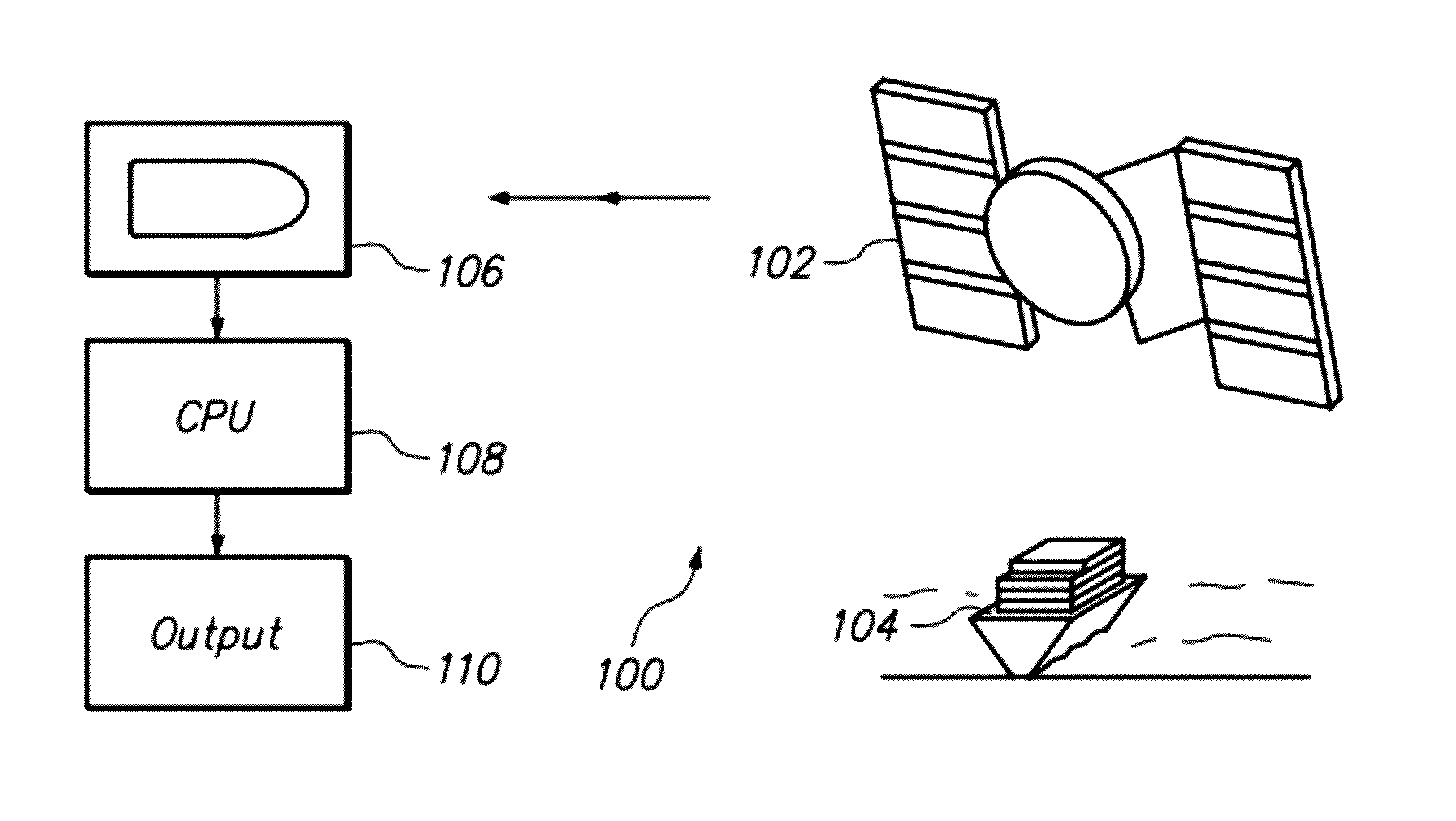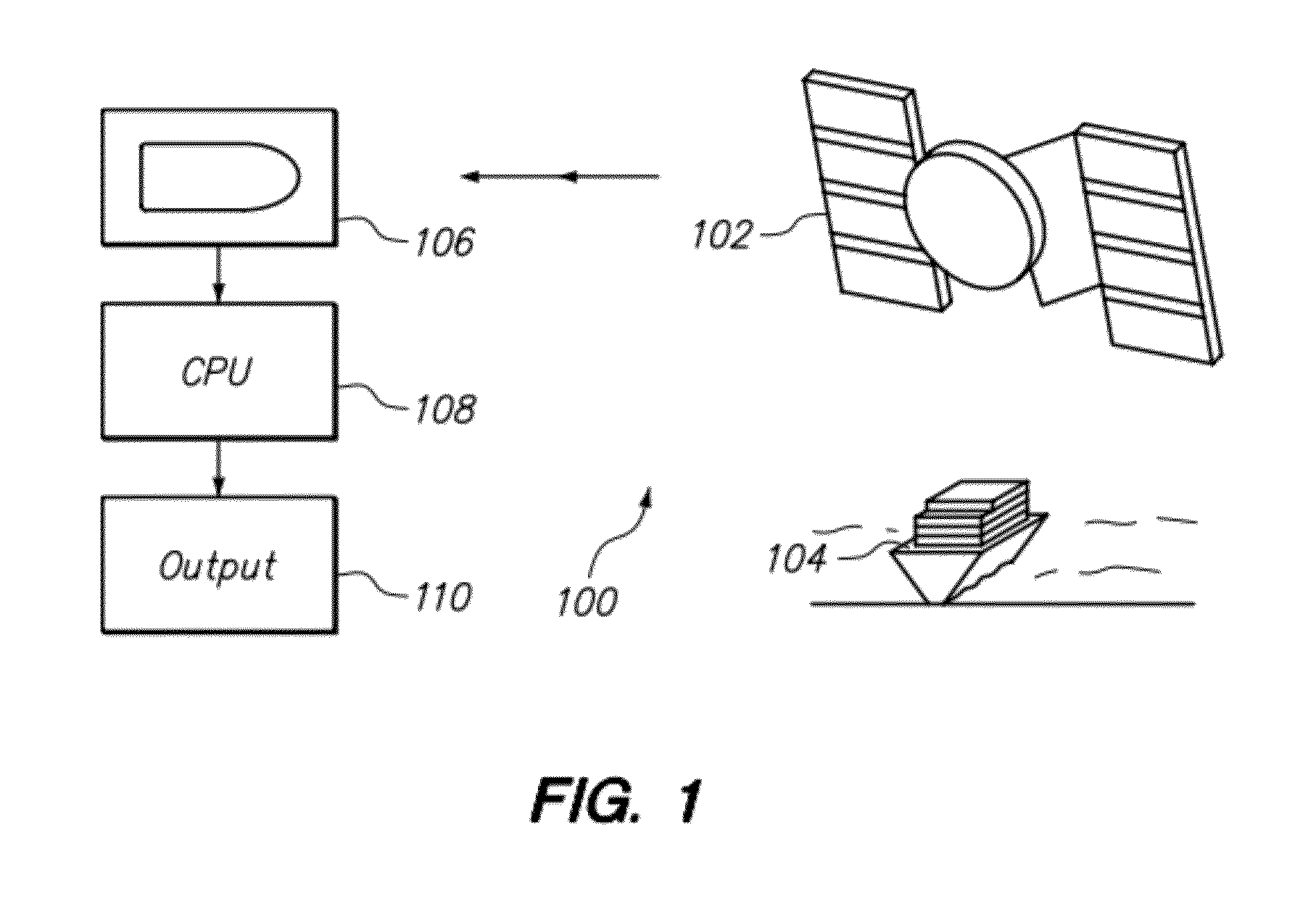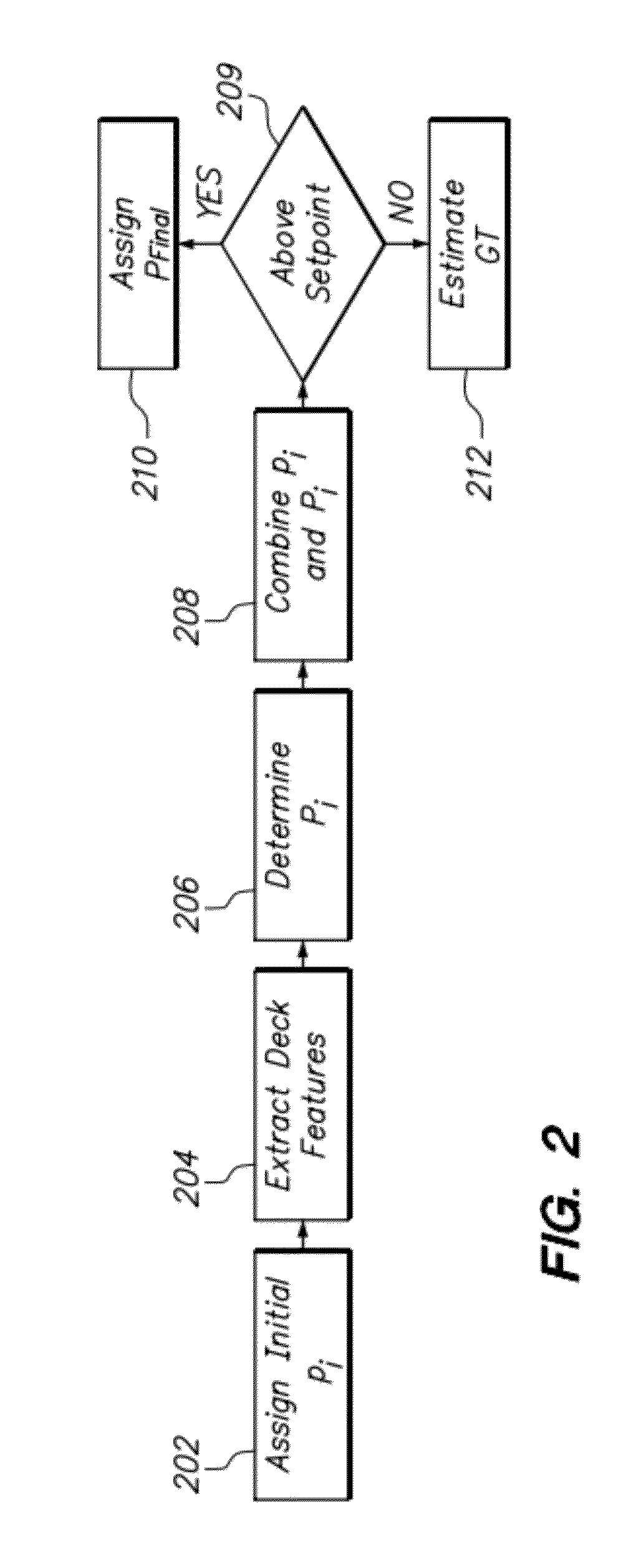Method for classifying vessels using features extracted from overhead imagery
a technology of overhead imagery and classification methods, applied in the field of classification of satellite vessels, can solve the problems of inability to accurately identify vessels of interest, cannot be automated, and can only be completed manually
- Summary
- Abstract
- Description
- Claims
- Application Information
AI Technical Summary
Benefits of technology
Problems solved by technology
Method used
Image
Examples
Embodiment Construction
[0023]Referring initially to FIG. 1, a system for processing of satellite imagery of vessels is shown and generally designated by reference character 100. As shown, system 100 includes a satellite 102, which detects ships / vessels 104 using imagery methods that are known in the art. One such imagery method can include nadir panchromatic electro-optical imagery. One such system and methods for detection of ship providing such satellite imagery input into the present invention can be found in U.S. patent Ser. No. 12 / 197,421 by Buck et al. for an invention entitled “Ship Detection System and Method from Overhead Images”, which is assigned to the same assignee as the present invention. The contents of the '421 application are hereby incorporated by reference herein. The satellite 102 generates an image 106 of vessel 104. The system and methods according to several embodiments of the present invention can manipulate image 106 using a processor 108 to yield a classification output 110, whi...
PUM
 Login to View More
Login to View More Abstract
Description
Claims
Application Information
 Login to View More
Login to View More - R&D
- Intellectual Property
- Life Sciences
- Materials
- Tech Scout
- Unparalleled Data Quality
- Higher Quality Content
- 60% Fewer Hallucinations
Browse by: Latest US Patents, China's latest patents, Technical Efficacy Thesaurus, Application Domain, Technology Topic, Popular Technical Reports.
© 2025 PatSnap. All rights reserved.Legal|Privacy policy|Modern Slavery Act Transparency Statement|Sitemap|About US| Contact US: help@patsnap.com



